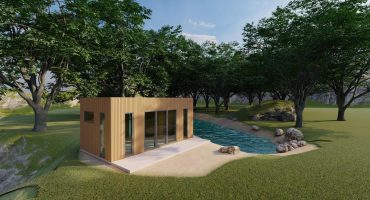It is all about precision and swiftness
Yes, those are two characteristics that can be met simultaneously. The actual manufacturing time of a house can be divided into two main stages - design and processing (execution). Despite what most people tend to believe, the design process takes longer than the actual execution process of the project in the factory.
Why is that? Well, in the design stage, it is essential for each element of the structure to be designed in such a way that the fit between them to be perfect because the manufacturing process is 70% automated - we work with CNC equipment - and this requires a high design precision to achieve flawless execution of finished products.
How do we choose the right solution?
As we can conclude from the previous explanations, a large part of the difficulties in the manufacturing process start from the conception of the product = the design. To minimize the incidence of any type of error, we must choose to use simple, but complex software at the same time.
ERGIO uses CadWork software products, which are excellent for the type of activity carried out, being a specialized software for the design of wooden constructions. Unlike other 3D modeling solutions, CadWork allows you to build with prefabricated elements, such as OSB, DHF panels, etc., and beams, and work directly with volumes, without requiring intermediate extrusion operations and so on.
All program options and controls are designed to shorten the design time while maintaining the same precision features. The interface is intuitive and user friendly, with several ways of working and viewing in 2D and 3D that can be interchanged with a single click or keyboard shortcuts, all forming a chain reaction: design time is reduced, so the production of the house will take less, leading to a shorter delivery time.
The Module element
Purpose: a tool created to considerably shorten the time from placing the order to delivering the product on-site and to achieve the performance required by our partners.
It is a tool that can be customized with all the specific elements of each project and absolutely all the elements of the structure can be introduced, from staples, nails, to studs and beams. The name of the instrument comes from the very principle of modularity: each subdivision of the structure is created, which can then be modified independently and finally form the whole system.
The elements that make up a system are interchangeable, so they can be used in other systems if the requirements are similar, which is a great advantage for the partners we work with, because our solutions are faster and more complete.
 27 January 2021 by geo, in Case Study,COVID-19,Timber Frame,Wooden Construction Market,Wooden Construction Market
27 January 2021 by geo, in Case Study,COVID-19,Timber Frame,Wooden Construction Market,Wooden Construction Market